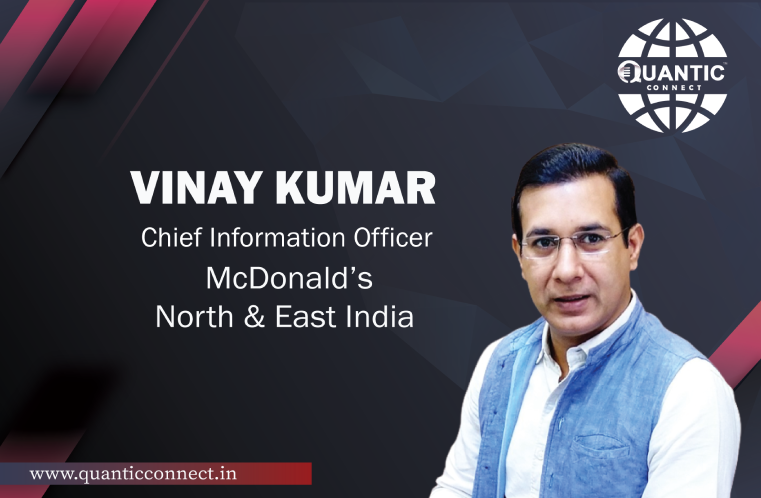Customer experience is becoming an increasingly important factor in the success of businesses today. Companies are investing more and more resources into ensuring their customers receive a satisfying experience with every single interaction. Recent research has found that 86% of buyers are willing to pay up to 25% more for a better customer experience, which shows just how powerful this concept is becoming. The key to providing excellent customer experiences lies in understanding the needs of each individual customer and tailoring services accordingly. This means investing time into getting to know customers’ preferences, as well as utilizing technology such as AI-powered chat bots or interactive voice response systems. Mr. Vinay Kumar, Chief Information Officer of McDonald’s North & East India, talks with Marquis Fernandes at Quantic Connect, about his thoughts on the subject.
AI driving the future of customer experience?
IDC’s research indicates artificial intelligence is proving to be a powerful tool for improving the customer experience for businesses. Early proponents say their CX scores have significantly improved, their profit margins have enhanced, and their competition has stiffened. AI systems were required in turn to improve what human agents could do. The best-performing teams highlighted the importance of striking a balance between equipping their human agents with automation and utilizing further amounts of AI technology. At the same time, that was a basic requirement of maximizing their experts’ potential to achieve their goals. Backing up AI into digital customer platforms can speed up supply-chain decision-making and foster convenient access to the best goods and services your customers may need. This will enable straightforward, proactive, and frictionless customer experiences that foster customer comfort and make them feel personally known.
Building apt contact centres. Are we future ready?
Today, customer expectations are higher than ever. They want individualized and timely customer service, along with access to service using all relevant channels. Whether talking to a customer service agent or to an automated self-service Chabot, they expect all lines to be connected. The contact centre of tomorrow won’t be siloed, isolated contact centre, but an omnichannel call-centre that that features a full 360-degree view of the customer journey. We want to simplify our employees’ experience at our store and take it to a new level. We intend to implement EXP (Experience) Theory on all our different levels to enhance guest experiences.
Personalizing customer experience at every step of the cycle: how far have companies reached?
For the very best way to promote products and services, Hyper-personalization is a more advanced method than mass personalization. Through the use of data, analytics, artificial intelligence, and automation, target marketing is made attainable. Companies can hyper-customize communications by carefully analysing data to generate highly personalized messages for customers and other stakeholders at the ideal time and location, through the ideal channel. Individualized marketing now allows them to provide an immersive experience for customers, develop relationships with existing customers, and earn new customers. This results in improved customer satisfaction and brand loyalty. If we analyse the situation of e-commerce retailers all around us, it is noticeable that treasure trove mining has adopted the use of Big Data and Hadoop.
Deciding on the right approach to balance between the brand value and customer satisfaction
Customer experience is always the key to keeping brand loyalty and is always an important consideration. We must strike a sturdy balance between customer experience and what it is currently in the marketplace. If we cannot provide the customer experience they want or offer, maintaining Brand Value will be a challenge. The best example I’ve seen during the pandemic is that restaurants with limited electronic options became unable to retain even the most loyal customers. Customers were leaving due to a low standard of customer experience. We always need to create a sturdy balance between both.
Re-examining traditional processes and experimenting with new models for customer service
Customer service has been at the heart of the business no matter what we produce or sell. We must prioritize customers that have stayed with us for a long time, as everyone likes to call it, the famous Gen X and Gen Z. We just need to make all communication channels accessible for Gen Z. Today young customers would rather connect to businesses via Chabot than by reaching out to over the telephone. At the same time our previous customer still wanted to phone and speak to our staff of customer support. We base our innovative contact centre techniques on the needs of the market in which we operate.
[blog_bottom_ad]



